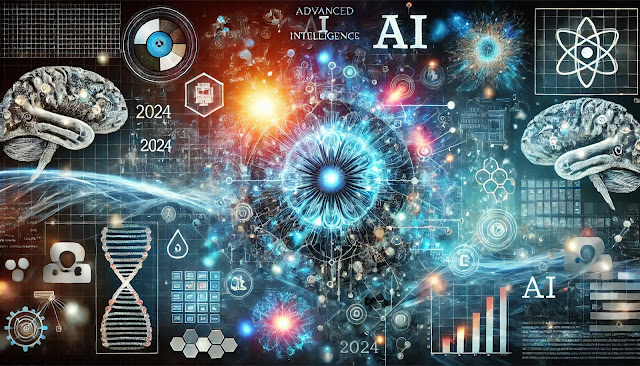GCP AI Fundamentals - AIML Series 5 - ML Enterprise
Introduction
In the dynamic realm of machine learning (ML), enterprise workflows form the backbone of innovative solutions. This guide delves into the intricacies of ML enterprise workflows on Google Cloud Platform (GCP), exploring key components such as the Feature Store, Data Catalog, Dataplex, Analytics Hub, and DataPrep. We'll also navigate through custom training practices, hyperparameter tuning with Vertex Vizier, and the essentials of prediction and model monitoring. Buckle up for a witty, casual, and informative ride through the fascinating world of GCP AI fundamentals.
ML Enterprise Workflow
1. Data in Enterprise:
- Feature Store:
- Definition: A centralized repository for storing, sharing, and managing features.
- Use Case: Enables reuse of features across different models to ensure consistency and efficiency.
- Benefits:
- Reduces redundancy.
- Streamlines feature management.
- Improves model performance by using well-defined features.
- Data Catalog:
- Definition: A service to discover, understand, and manage data at scale.
- Use Case: Simplifies data discovery for analysts, data scientists, and developers.
- Benefits:
- Enhances data governance.
- Improves data quality.
- Facilitates collaboration by providing metadata and context.
- Dataplex:
- Definition: A data fabric solution for managing data across distributed environments.
- Use Case: Facilitates unified data management and governance.
- Benefits:
- Centralizes data access and security.
- Promotes data democratization.
- Ensures compliance and data integrity.
- Analytics Hub:
- Definition: A platform for sharing and accessing data and insights.
- Use Case: Encourages collaboration and data sharing within and between organizations.
- Benefits:
- Accelerates data-driven decision-making.
- Enhances analytical capabilities.
- Fosters innovation through shared insights.
2. Data Pre-processing Options:
- DataPrep:
- Definition: A visual data preparation tool.
- Use Case: Simplifies data cleaning and transformation tasks.
- Benefits:
- Reduces preparation time.
- Improves data quality.
- Allows non-technical users to perform complex data transformations.
Custom Training
1. The Art and Science of ML:
- Art: Involves creative problem-solving, intuition, and domain expertise.
- Example: Selecting the right features for a model requires domain knowledge and experience.
- Science: Relies on algorithms, statistical methods, and computational power.
- Example: Applying gradient descent to optimize model parameters.
- Blend: Successful ML requires a balance of both aspects.
- Example: Combining creative feature engineering with rigorous hyperparameter tuning.
2. Make Training Faster:
- Techniques:
- Distributed training: Spreading the workload across multiple machines.
- Model parallelism: Distributing different parts of the model across different machines.
- Optimized hardware: Using GPUs and TPUs for faster computations.
- Benefits:
- Reduces time to market.
- Increases efficiency.
- Allows for training on larger datasets.
3. When to Use Custom Training:
- Scenarios:
- Unique business requirements that standard models can't meet.
- Complex models not supported by AutoML.
- Need for fine-tuning and optimization to achieve better performance.
- Benefits:
- Tailored models for specific tasks.
- Better performance and accuracy.
- Greater control over the training process.
4. Training Requirements and Dependencies:
- Considerations:
- Data volume and quality: High-quality, well-labeled data is crucial.
- Computational resources: Sufficient hardware and cloud resources are needed.
- Expertise and skills: Knowledge in ML algorithms and model tuning.
- Dependencies:
- Data pipelines: Efficient data flow from collection to preprocessing.
- Version control: Tracking changes in code and data for reproducibility.
- Monitoring tools: Keeping an eye on training metrics and performance.
5. Training Custom ML Models Using Vertex AI:
- Steps:
- Data ingestion and preprocessing: Collecting and cleaning the data.
- Model design and selection: Choosing the right architecture and algorithms.
- Training and evaluation: Running experiments and assessing performance.
- Deployment and monitoring: Moving models to production and ensuring they perform well.
- Benefits:
- Comprehensive toolset for end-to-end ML workflows.
- Seamless integration with other GCP services.
- Scalability and flexibility.

Vertex Vizier Hyperparameter Tuning
- Definition: A service for optimizing hyperparameters of ML models.
- Process:
- Define search space: Specify the range and types of hyperparameters to explore.
- Select optimization algorithm: Choose methods like Bayesian optimization or grid search.
- Run experiments: Conduct trials to test different hyperparameter combinations.
- Analyze results: Evaluate performance and identify the best settings.
- Benefits:
- Improves model performance.
- Reduces manual tuning efforts.
- Provides insights into model behavior and sensitivity.
Prediction and Model Monitoring
1. Prediction:
- Process: Deploying models to make predictions on new data.
- Steps:
- Model serving: Setting up endpoints to receive and process prediction requests.
- Scaling: Ensuring the infrastructure can handle varying loads.
- Logging: Capturing prediction requests and responses for analysis.
- Steps:
- Tools: Vertex AI Prediction service.
- Features:
- Auto-scaling: Adjusts resources based on demand.
- Logging and monitoring: Tracks performance and usage metrics.
- Integration: Works seamlessly with other GCP services.
- Features:
- Benefits:
- Scalable and efficient predictions.
- Integrated with other GCP services.
- Real-time insights and fast response times.
2. Model Monitoring:
- Importance: Ensures models perform well over time.
- Challenges:
- Data drift: Changes in input data distribution.
- Concept drift: Changes in the relationship between inputs and outputs.
- Model degradation: Performance decline over time.
- Challenges:
- Techniques:
- Drift detection: Monitoring data distributions and triggering alerts on significant changes.
- Performance metrics: Tracking accuracy, precision, recall, and other relevant metrics.
- Alerting and notifications: Setting up alerts for unusual behaviors or performance drops.
- Benefits:
- Maintains model accuracy.
- Identifies issues proactively.
- Ensures compliance and reliability in production environments.
Conclusion
Mastering the ML enterprise workflow on GCP involves understanding and effectively utilizing various tools and services. From data management with Feature Store and Dataplex to custom training and hyperparameter tuning with Vertex AI, this guide provides a comprehensive overview to help you navigate the ML landscape. Stay witty, stay informed, and keep innovating!








Comments